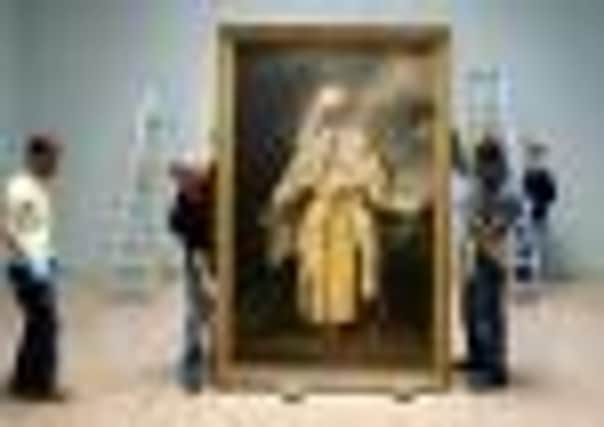Tax battle over sale of £10m national treasure


Omai, a romantic portrait of one of the first Pacific Islanders to visit Europe, is viewed by many as Sir Joshua’s finest work and is recognised as a national treasure.
For centuries, the painting graced the walls of Castle Howard in North Yorkshire until it was sold by Simon Howard, whose family has lived at the house since it was built in the 18th Century, in part to fund his divorce from wife, Annette.
Advertisement
Hide AdAdvertisement
Hide AdThe sale at Sotheby’s in 2001 made it the second-most expensive British picture ever sold at auction at the time, going for six and a half times the previous £1.6m record for a work by the artist.
Omai was part of the estate of soldier and former chairman of the BBC’s board of governors, George Howard, who became Lord Howard of Henderskelfe a year before his death in 1984.
Ever since the sale, his executors have been rowing with tax authorities over whether the hammer price of £9.4m should be subject to capital gains tax.
The executors, including Simon Howard, argue the painting was an essential draw for visitors to Castle Howard and so should be viewed as “plant” used in running the house as a business – and thus exempted from the tax levy.
Advertisement
Hide AdAdvertisement
Hide AdIn a debate art historians might find shocking, the executors’ lawyers submit that the painting was a “wasting asset” and a piece of “apparatus” that should – at least in tax terms – have been seen as valueless 50 years after it was placed on public display in the 1950s. If those arguments succeed, it will be seen as a huge boost to other landed families who own valuable collections of art or antiques but – like the fictional Lord Grantham in Downton Abbey – are engaged in a perennial fight to maintain their inheritance against the depredations of tax.
The dispute over whether the £9.4m should be exempted from capital gains tax has now made its way to the Royal Courts of Justice in London where lawyers for Her Majesty’s Revenue and Customs are fighting the executors every inch of the way.
George Howard lent Omai to the estate company that has owned Castle Howard since 1952 and the executors’ QC, William Massey, said Sir Joshua’s work was a major attraction that drew in visitors. Without it, and other works of art from the baron’s collection, he argued the stately home would have been unviable.
A tax tribunal dismissed those arguments last year. Although it acknowledged Omai was “no doubt greatly admired by visitors”, it pointed out that its sale did not lead to any fall in visitor numbers, which increased by ten per cent in later years.
Advertisement
Hide AdAdvertisement
Hide AdThe tribunal also said the painting had only been loaned to the company on an “informal basis” and the baron could have asked for it back at any time.
Asking judge Mr Justice Morgan to overturn that decision at the Upper Tribunal, Mr Massey insisted Omai was part of the “functional apparatus” used by the company in its visitors trade and should be viewed as “plant” under section 44 of the Taxation and Chargeable Gains Act 1992.
The tax hearing, which is expected to last two days, is the latest episode in a complicated saga involving the painting, which was bought in 2001 by Guy Morrison.
The London dealer said at the time: “It is by far the best and most important British picture to appear on the open market in my 25 years in the trade.”
Advertisement
Hide AdAdvertisement
Hide AdHe is thought to have been acting on behalf of Irish stud magnate John Magnier, who now owns the painting and who applied in 2002 to permanently export it from the UK to Dublin.
The painting was identified as a national treasure, prompting the then-Government to defer his application to allow time for a UK museum to buy it.
By 2003, the Tate had secured the £12.5m it was valued at from a private donor, but Mr Magnier would not accept the offer and his export application was refused.
A temporary export licence was later granted allowing him to exhibit Omai at the National Gallery of Ireland (NGI), where it was on display for over five years.
Advertisement
Hide AdAdvertisement
Hide AdIt is now back in the UK and Culture Minister Ed Vaizey refused another temporary export licence application in July.
He said: “The temporary export licence system is an excellent way to allow works of significant national importance to travel overseas where they may be enjoyed by audiences around the world before returning to the UK.
“Joshua Reynolds’ Omai is an outstanding work of art which has already spent more than five years overseas and I do not want to see the regime being undermined by repeated use of temporary licences.”